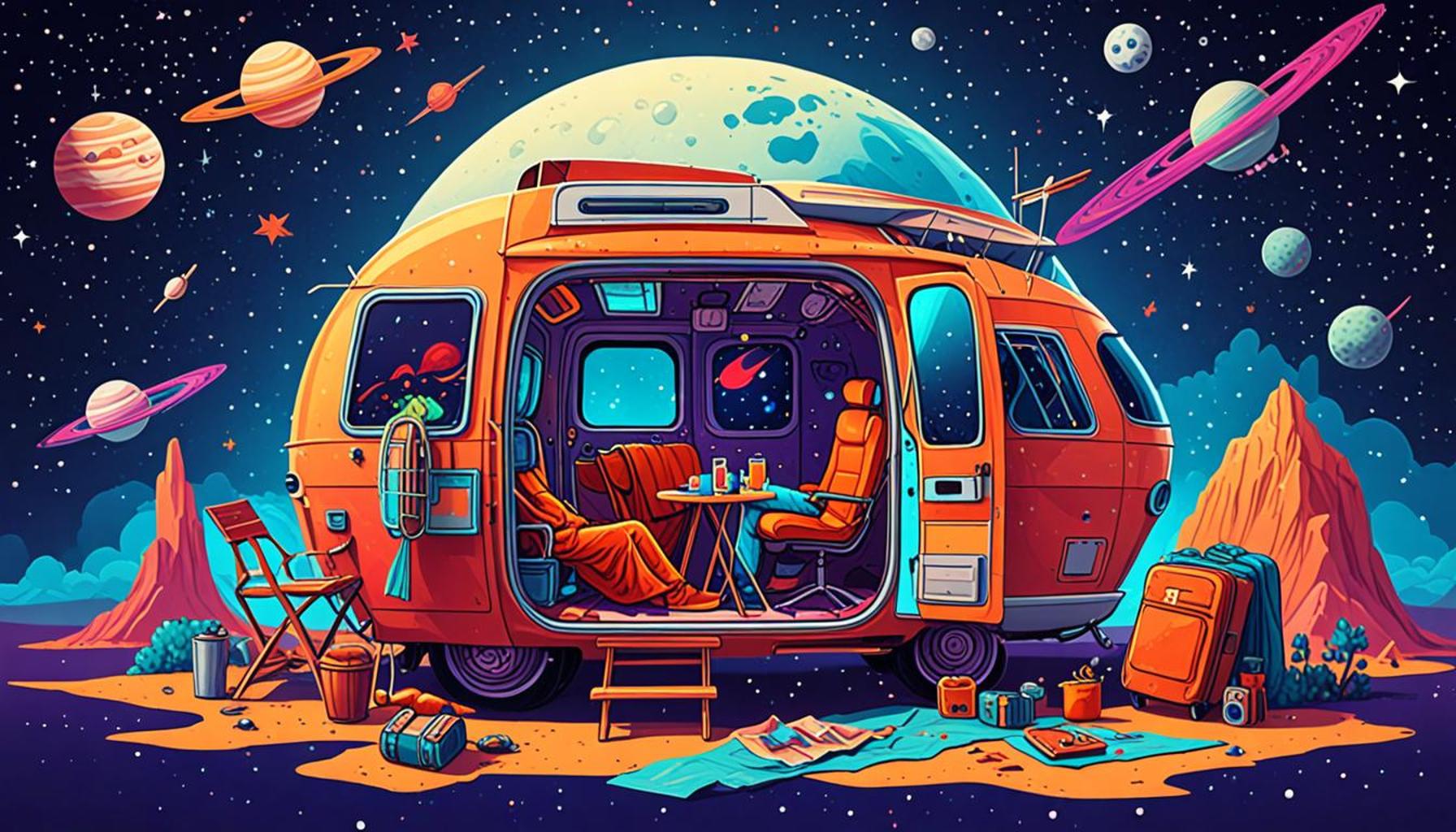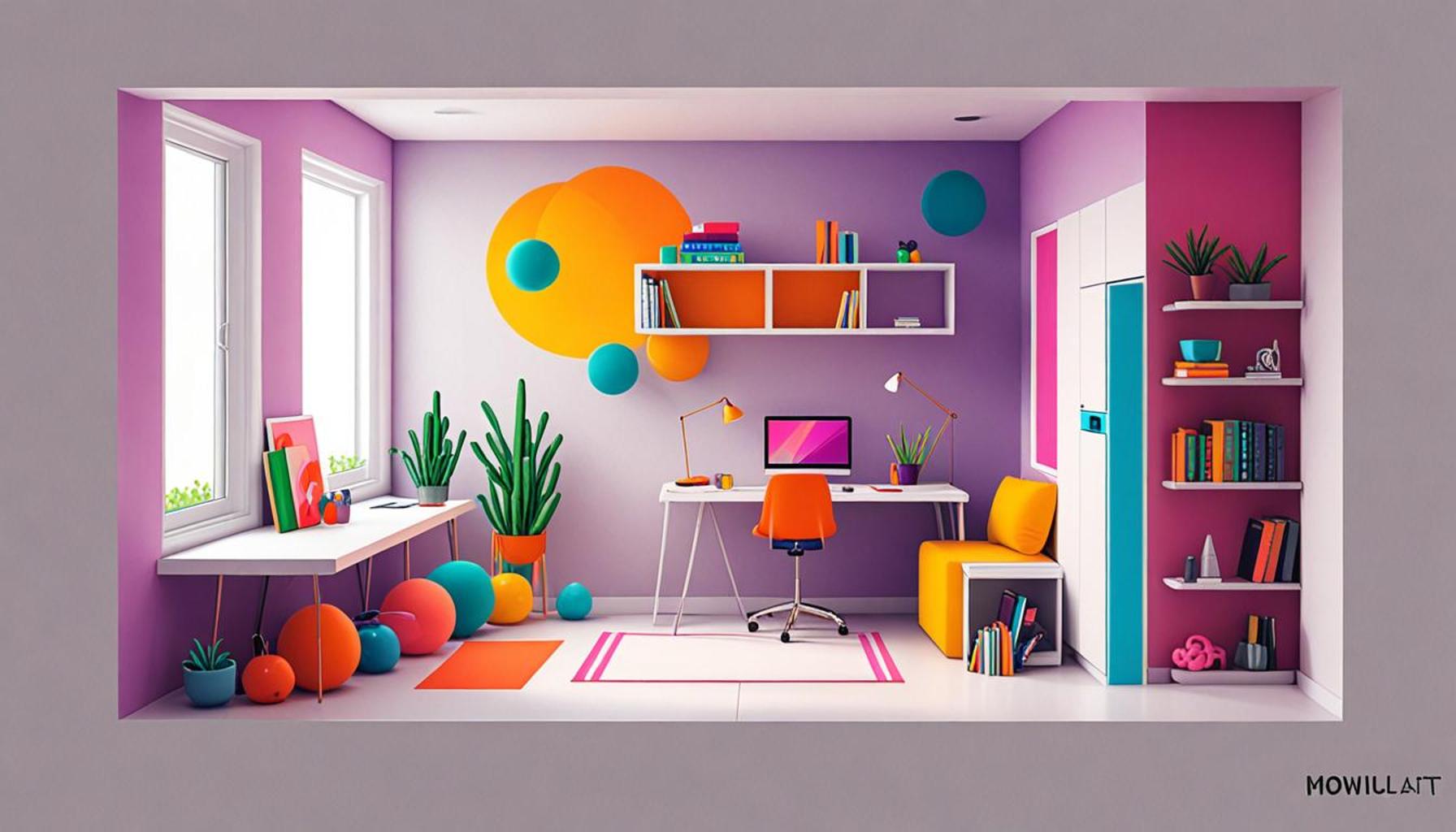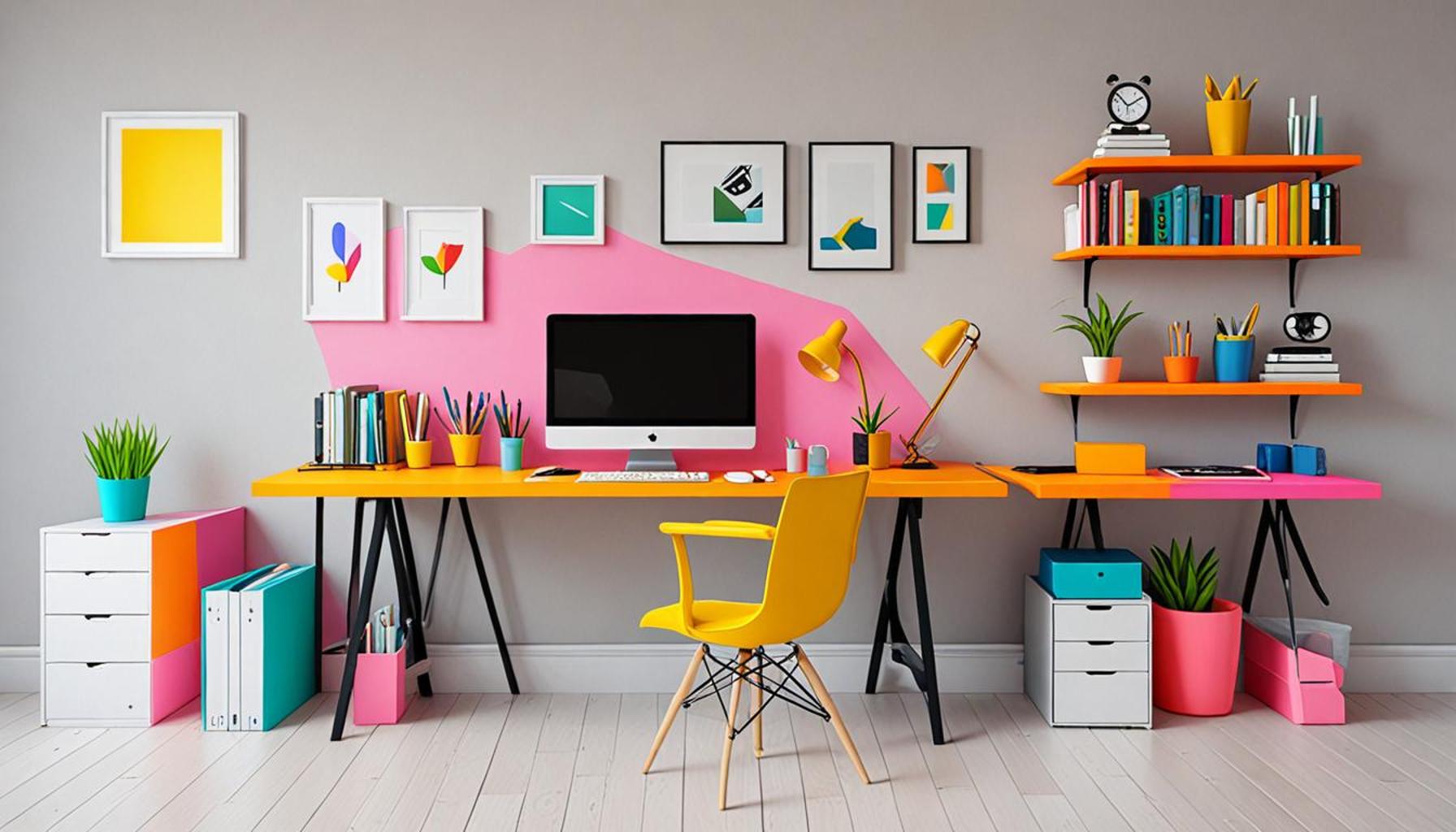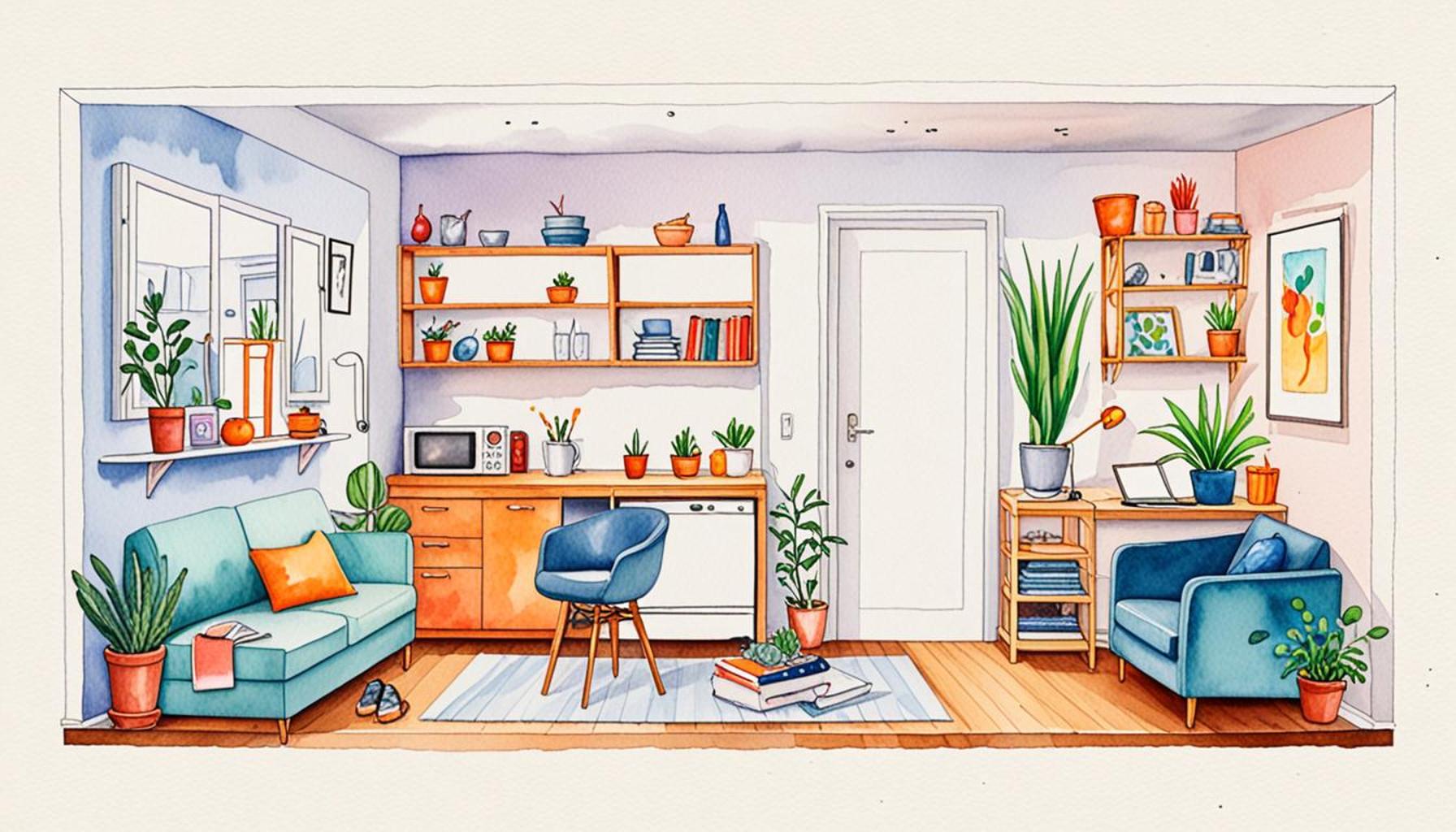Nomadic Lifestyles: Space Optimization for Frequent Travel and Relocation

A New Way of Living
In an increasingly mobile world, more individuals are embracing a nomadic lifestyle. This shift towards frequent travel and relocation challenges traditional living standards and encourages innovative solutions for space optimization. As more Americans seek to break free from the constraints of conventional living, the art of space optimization becomes vital to leading this fulfilling lifestyle.
Understanding Modern Nomadism
What does it mean to live as a modern nomad? There are several key aspects that define this lifestyle and illustrate its growing appeal:
- Minimalist Living: At the core of nomadic life is the concept of prioritizing essential items. This lifestyle encourages individuals to reduce clutter and focus on what truly matters. For instance, many nomads choose to keep only versatile clothing items and essential gadgets that allow for both work and leisure, such as a laptop that enables remote work while also accommodating entertainment needs.
- Smart Packing: Effective space utilization is crucial for anyone on the move. Travelers often employ space-saving techniques, such as rolling clothes instead of folding them to maximize luggage capacity. Additionally, many opt for multi-functional gear, like a travel backpack that can transform into a duffle bag or various portable kitchenware that serves multiple cooking functions.
- Flexible Housing: The advent of tiny homes, RVs, and van conversions provides nomads with a plethora of housing options. Many individuals choose to invest in customizable tiny homes built on trailers, allowing for both mobility and a personal touch. Others may rent RVs or explore co-living spaces that offer like-minded individuals a chance to connect while sharing resources.
Benefits Beyond Travel
The benefits of adopting a nomadic lifestyle extend far beyond the thrill of travel. Individuals can experience:
- Cost Savings: One of the most palpable advantages is the potential for reduced living expenses. By avoiding long-term leases and living in mobile homes or shared spaces, nomads often find themselves spending significantly less on rent compared to traditional housing. This shift can lead to increased financial freedom and the ability to invest in experiences rather than possessions.
- Cultural Exposure: Living on the move nurtures a rich tapestry of cultural experiences. Nomads engage with diverse communities, trying new foods, learning languages, and experiencing traditions that enhance their worldview. This exposure often fosters a deeper appreciation of inclusivity and the nuances that exist within different cultures.
- Personal Growth: The lifestyle inherently calls for adaptability and resilience. Navigating new environments, meeting people from various backgrounds, and overcoming the challenges of continuous relocation fosters personal growth. Many find that they emerge more confident and self-sufficient, equipped with skills that transcend the boundaries of travel.
As the trend of nomadic living continues to grow, it’s essential to understand how to make the most of limited space effectively. Developing ingenious strategies for space optimization allows for a more fulfilling and manageable way of life. Whether you’re a seasoned traveler or contemplating this lifestyle shift, this exploration into smart living solutions will provide valuable insights into creating a comfortable, mobile existence that aligns with your aspirations.
DISCOVER MORE: Click here to unlock digital decluttering secrets
Strategies for Effective Space Optimization
Embracing a nomadic lifestyle necessitates smart strategies for space optimization. For those who choose to travel frequently or relocate often, the challenge lies in maximizing utility while minimizing physical possessions. Here are several effective approaches that aspiring nomads can adopt:
1. Multi-Functional Furniture
One of the most effective methods for space optimization involves investing in multi-functional furniture. For instance, a bed that doubles as storage or a couch that transforms into a guest bed can significantly reduce the need for excess furnishings. Many modern tiny homes and RVs incorporate well-designed solutions like:
- Convertible tables: Tables that can fold down or expand based on need prove invaluable in compact living spaces.
- Murphy beds: These wall-mounted beds can be tucked away when not in use, freeing up floor space for daily activities.
- Modular storage: Systems that can be rearranged to fit different configurations allow for flexibility as lifestyle needs change.
2. Declutter and Digitize
Minimalism is a central tenet of the nomadic lifestyle, and decluttering plays a significant role in making travel more manageable. Individuals can start by conducting a thorough inventory of their belongings, identifying items that are no longer needed or used. Additionally, the process of digitizing documents, photos, and even books can reduce physical clutter. Modern nomads often utilize cloud storage solutions to access important files while minimizing tangible items. This practice not only saves space but also ensures that essential information is always accessible regardless of location.
3. Efficient Use of Packing Cubes
When it comes to managing the contents of luggage, packing cubes are a game changer. These compartments help categorize clothing and accessories, making the packing process more organized. By efficiently utilizing every inch of luggage space, nomads can avoid the frustration of rummaging through a disorganized suitcase. Each cube can be dedicated to specific items, such as:
- Clothing: Different cubes for tops, bottoms, and undergarments ensure quick access and identification.
- Toiletries: Keeping grooming items in a designated cube reduces spills and allows for easy transport.
- Electronics: A separate cube for chargers, cords, and devices prevents tangling and ensures everything is in one place.
4. Embrace the Digital Nomad Life
As more people adopt the nomadic lifestyle, the digital nomad community continues to flourish. This community comprises individuals who leverage technology to work remotely while traveling the globe. By embracing technologies such as video conferencing tools and project management software, nomads can maintain productivity regardless of their physical location. Establishing a strong digital presence also offers opportunities for co-working spaces worldwide, providing an efficient way to network and collaborate with fellow travelers.
In conclusion, mastering space optimization is critical for those embarking on a nomadic lifestyle. By integrating multi-functional furniture, engaging in a decluttering process, employing packing cubes, and maintaining a digital presence, individuals can streamline their living arrangements and fully enjoy the freedom that comes with mobility. As the nomadic movement gains momentum, these innovative practices continue to evolve, leading to even more creative solutions for modern travelers seeking adventure without sacrificing comfort.
| Advantage | Description |
|---|---|
| Flexibility in Living Spaces | Adaptable layouts enable quick reconfiguration for various travel needs. |
| Efficient Use of Space | Smart storage solutions optimize every inch, making transitions effortless. |
Nomadic lifestyles often demand innovative solutions to maximize living potential in limited spaces, especially for those who relocate frequently. For instance, utilizing modular furniture or foldable designs can dramatically enhance how space is perceived and organized. Moreover, the integration of multi-functional items not only saves space but also simplifies the moving process. Additionally, many nomads are leveraging technology like virtual reality and online platforms to visualize spaces before committing to a location. This foresight empowers them to make informed decisions, reducing the stress typically associated with frequent relocations.Ultimately, embracing a nomadic lifestyle means challenging traditional living concepts, pushing the boundaries of innovation, and fostering sustainable practices that resonate well with modern minimalism. Exploring these aspects can further enhance the nomadic experience, leading to a fulfilling and adventurous life on the move.
DISCOVER MORE: Click here to discover creative storage solutions
Innovative Storage Solutions for Nomads
Beyond the traditional methods of furniture and packing strategies, there lies a world of innovative storage solutions that cater precisely to the needs of modern nomads. As the lifestyle of frequent travelers continues to expand, so does the technology and creativity behind effective storage. Here are several pioneering methods and products that can augment space optimization:
1. Under-Bed Storage Systems
In compact living environments, every inch of space counts. Utilizing under-bed storage systems is an efficient way to make the most of often overlooked areas. Various options are available, including:
- Storage bins: Clear, stackable bins allow for easy visibility of contents and maximize the otherwise unused space beneath a bed.
- Rolling drawers: Drawers on wheels can quickly be accessed and moved around, offering flexibility and ease of use.
- Bed risers: By elevating the bed frame, the height between the floor and bottom of the bed increases, allowing for larger storage containers.
2. Wall-Mounted Solutions
Utilizing vertical space is paramount in optimizing storage. By installing wall-mounted solutions, nomads can keep essential items organized and readily available without cluttering floors. Options include:
- Wall shelves: Floating shelves or built-in units can display books, plants, and decorative items while providing storage for other essentials.
- Pegboards: These versatile organizers can hold anything from kitchen utensils to craft supplies, adapting to the user’s needs.
- Magnetic strips: Ideal for kitchens or workspaces, magnetic strips keep tools and knives at hand while saving valuable drawer space.
3. Smart Technology Integration
As technology advances, so do the possibilities for optimizing space on the go. Smart storage solutions are now more accessible than ever, providing innovations tailored to nomads’ needs. Smart furniture blends functionality with connectivity, with options such as:
- Smart desks: Height-adjustable desks can adapt to various work styles and can even fold down when not in use.
- Integrated devices: Some furniture comes with built-in charging stations and Bluetooth speakers, minimizing the need for extra cords and charging hubs.
- Smart home systems: Integrating devices that are controllable via smartphone allows efficient management of lighting, security, and climate, optimizing the user experience of any chosen space.
4. Adaptive Packing Techniques
To further enhance the travel experience, nomads can employ adaptive packing techniques that not only save space but also allow for easy access to belongings. Here are a few methods:
- Rolling clothes: Instead of folding, rolling clothing can save space and reduce wrinkles, making it easier to fit items in tighter areas.
- Wearable items: Layers can be worn while traveling to save on suitcase space while ensuring you have access to warm or cool clothing depending on the climate.
- Compression bags: These bags remove excess air, allowing clothing to take up substantially less space when packed away.
By integrating these innovative storage solutions and adaptive packing strategies into their lives, nomads can navigate their journeys with increased efficiency and comfort. The continuous evolution of space optimization reflects the adaptability of lifestyle choices in a modern world where mobility is cherished.
DIVE DEEPER: Click here to discover why conscious consumption matters
Conclusion
In summary, the rise of nomadic lifestyles has transformed how individuals perceive and utilize their living spaces. Adapting to a world where mobility emphasizes the importance of effective storage solutions and innovative packing techniques has become essential for maintaining a sense of home even when on the move. The utilization of under-bed storage systems, wall-mounted solutions, smart technology integration, and adaptive packing techniques not only optimizes space but enhances the overall travel experience, allowing for greater flexibility and comfort.
Moreover, as the demand for space optimization grows among those leading transient lives, the creative potential for making the most of limited areas continues to expand. Each of these methods not only represents a response to practical challenges but also serves as an invitation for exploration and creativity. With advancements in technology and design, it is now easier than ever for nomads to create functional and aesthetically pleasing environments.
Ultimately, embracing a nomadic lifestyle is about more than just travel; it’s about redefining how we interact with our belongings and our environments. As we look toward the future, the exploration of innovative solutions will undoubtedly continue to inspire individuals to live efficiently, embracing a spirit of adventure without compromising comfort. Whether you’re a seasoned traveler or just starting your journey, there is always an opportunity to discover new strategies for space optimization that align with your nomadic aspirations.


